Overview:
Puerto Rico is a Caribbean paradise blending vibrant culture, history, and natural beauty.
Known for its white-sand beaches, lush rainforests, and historic cities, this U.S. territory offers an experience that feels worlds away.
Visitors can explore colonial architecture, indulge in local cuisine, or soak in the island’s rich Afro-Caribbean heritage.
Let’s explore the top 15 tourist attractions in Puerto Rico, each capturing the island’s unique allure.
Table of Contents
1. Old San Juan
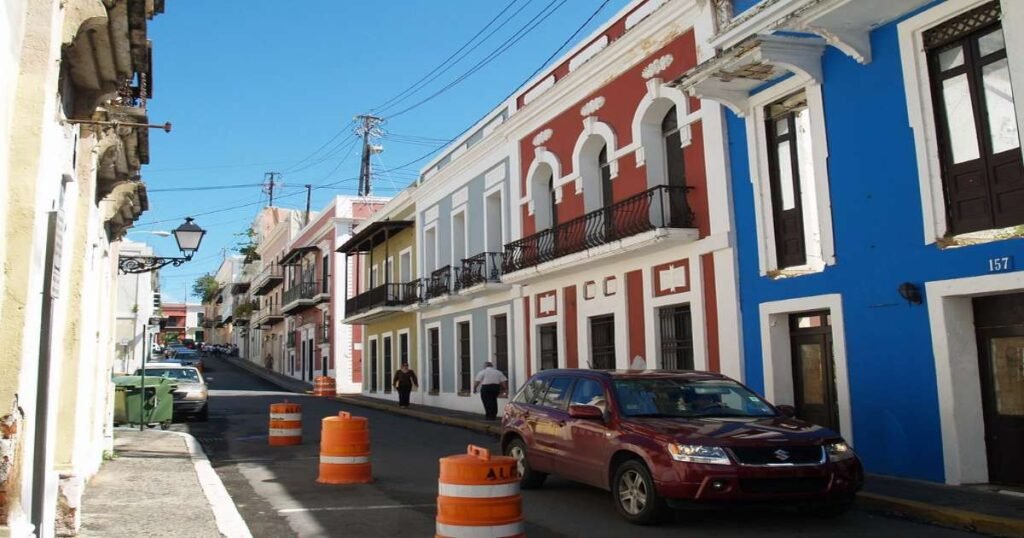
Introduction: Old San Juan, the island’s oldest settlement, is a colonial gem filled with colorful buildings, cobbled streets, and centuries-old forts. This UNESCO World Heritage site is a must-visit for history lovers.
Historical and Cultural Significance: Founded in 1521, Old San Juan served as a stronghold for Spanish settlers. Its well-preserved colonial architecture showcases Spanish influence and resilience.
Unique Features: The walled city is home to historic sites like Castillo San Felipe del Morro and La Fortaleza, the governor’s residence.
Best Time to Visit: Visit during the cooler months (December to April) for pleasant sightseeing weather.
Travel Tips:
- Transportation: Walking is the best way to explore Old San Juan.
- Accommodation: Choose a boutique hotel within Old San Juan for an immersive experience.
- Local Customs: Respect the historic sites, and don’t miss trying traditional Puerto Rican dishes in local cafes.
2. El Yunque National Forest

Introduction: El Yunque is the only tropical rainforest in the U.S. National Forest System, famous for its waterfalls, diverse wildlife, and lush greenery.
Historical and Cultural Significance: Revered by the indigenous Taíno people, El Yunque is a sacred place and offers insights into the island’s natural heritage.
Unique Features: Hiking trails, scenic waterfalls, and viewpoints like Yokahú Tower provide breathtaking views of the forest and coastline.
Best Time to Visit: Year-round, though mornings are ideal to avoid rain showers.
Travel Tips:
- Transportation: A car is essential to reach El Yunque.
- Accommodation: Stay in nearby towns like Río Grande or Fajardo.
- Local Customs: Respect wildlife, avoid littering, and carry water and insect repellent.
3. Culebra Island

Introduction: Culebra, an island municipality of Puerto Rico, is famous for its pristine beaches, especially Flamenco Beach, which is consistently ranked among the world’s best.
Historical and Cultural Significance: Culebra has a history of pirates, military activity, and indigenous settlement. Today, it’s a peaceful haven for beach lovers.
Unique Features: The crystal-clear waters and white sands of Flamenco Beach make it a top attraction, ideal for snorkeling and sunbathing.
Best Time to Visit: December to April, when the weather is cooler and drier.
Travel Tips:
- Transportation: Accessible by ferry or small plane from San Juan.
- Accommodation: Opt for beachfront rentals for a relaxing stay.
- Local Customs: Conserve water, as resources are limited on the island.
4. Ponce

Introduction: Known as “La Perla del Sur” (Pearl of the South), Ponce is a culturally rich city with beautiful plazas, museums, and historic architecture.
Historical and Cultural Significance: Ponce’s architecture reflects its colonial and Spanish heritage. The city’s art and music scene make it a cultural hub.
Unique Features: Ponce is home to the iconic Parque de Bombas firehouse and the Ponce Art Museum, known for its impressive collection.
Best Time to Visit: December to April for ideal sightseeing conditions.
Travel Tips:
- Transportation: Ponce is a 90-minute drive from San Juan.
- Accommodation: Stay in Ponce’s historic center for easy access to sights.
- Local Customs: Respect the historic buildings and check museum hours in advance.
5. La Parguera Bioluminescent Bay
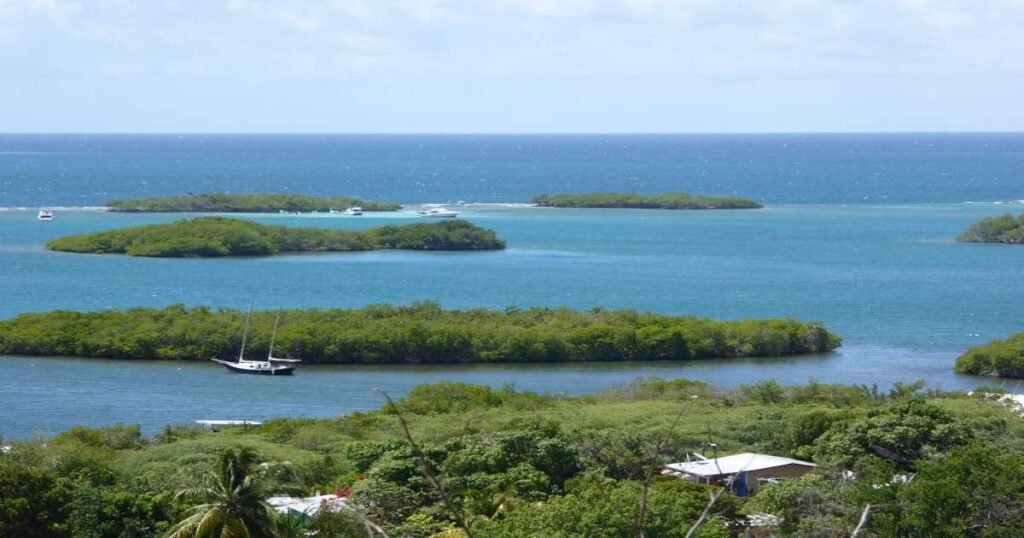
Introduction: La Parguera is one of Puerto Rico’s three bioluminescent bays, known for its glowing waters caused by bioluminescent microorganisms.
Historical and Cultural Significance: This natural wonder is unique to Puerto Rico and attracts eco-tourists who marvel at its ethereal beauty.
Unique Features: Nighttime boat tours allow visitors to see the glowing waters firsthand, creating an unforgettable experience.
Best Time to Visit: New moon nights for maximum brightness.
Travel Tips:
- Transportation: Located in Lajas, accessible by car from San Juan.
- Accommodation: Stay in nearby villages or book a coastal hotel.
- Local Customs: Avoid using sunscreen or insect repellent before swimming to protect the ecosystem.
6. Cabo Rojo

Introduction: Cabo Rojo, on Puerto Rico’s southwestern coast, offers dramatic landscapes, beautiful beaches, and natural salt flats.
Historical and Cultural Significance: Named after its reddish cliffs, Cabo Rojo is an ecological area known for its salt flats, lighthouse, and scenic ocean views.
Unique Features: The iconic Cabo Rojo Lighthouse and scenic Playa Sucia beach provide spectacular photo opportunities.
Best Time to Visit: Late afternoon for sunset views at the lighthouse.
Travel Tips:
- Transportation: Reachable by car from San Juan.
- Accommodation: Stay in the nearby town of Boquerón.
- Local Customs: Preserve the environment by sticking to marked trails.
7. Camuy River Cave Park
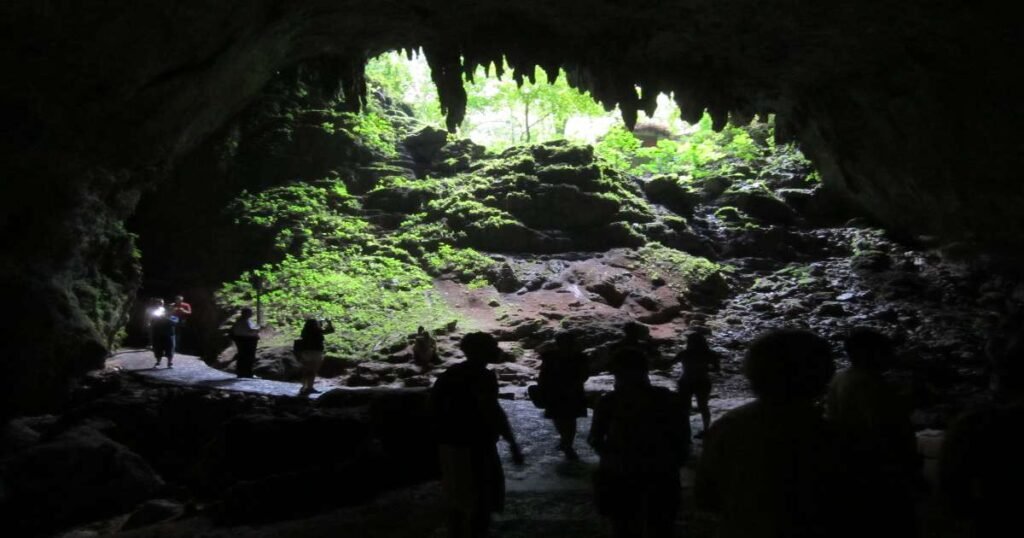
Introduction: The Camuy River Cave Park is one of the largest cave systems in the Western Hemisphere, featuring underground rivers and impressive formations.
Historical and Cultural Significance: Used by the indigenous Taíno people, this cave system is an archaeological wonder.
Unique Features: Guided tours take visitors through limestone caves, showcasing stalactites, stalagmites, and subterranean rivers.
Best Time to Visit: Year-round; arrive early to secure tour spots.
Travel Tips:
- Transportation: Located in Camuy, reachable by car.
- Accommodation: Stay in nearby Arecibo for easy access.
- Local Customs: Avoid touching formations to preserve the caves.
8. Isla de Mona

Introduction: Isla de Mona, often called “the Galapagos of the Caribbean,” is an uninhabited island and nature reserve with incredible biodiversity.
Historical and Cultural Significance: Historically used as a pirate hideout, Isla de Mona is now a conservation area protecting rare species.
Unique Features: The island features caves, unique wildlife, and coral reefs, making it a paradise for divers and nature lovers.
Best Time to Visit: April to August for ideal diving conditions.
Travel Tips:
- Transportation: Access is by permit-only charter boats.
- Accommodation: No hotels; camping is allowed with a permit.
- Local Customs: Leave no trace; the island is a protected reserve.
9. San Juan National Historic Site

Introduction: The San Juan National Historic Site encompasses fortifications like Castillo San Felipe del Morro, Castillo San Cristóbal, and the historic city walls, which are prime examples of Puerto Rico’s colonial military architecture.
Historical and Cultural Significance: This site, a UNESCO World Heritage site, served as a critical defense system for the Spanish Empire in the Caribbean. It played a key role in protecting the island from invaders.
Unique Features: Highlights include the sweeping ocean views from El Morro, tunnels, dungeons, and impressive walls at San Cristóbal.
Best Time to Visit: Mornings are best to avoid crowds and midday heat.
Travel Tips:
- Transportation: Located within Old San Juan, it’s easily accessible by foot or public transport.
- Accommodation: Stay within Old San Juan for convenient access.
- Local Customs: Respect the historical site by staying on designated paths.
10. Gilligan’s Island (Cayo Aurora)

Introduction: Gilligan’s Island, located off the coast of Guánica, is a mangrove-lined cay perfect for snorkeling, kayaking, and a relaxing day in shallow, turquoise waters.
Historical and Cultural Significance: Named after the popular TV show, this cay has become a beloved local spot for family outings and water activities.
Unique Features: The island’s calm, shallow waters and underwater pathways through mangroves make it a serene destination for snorkeling.
Best Time to Visit: Weekdays are ideal for fewer crowds, especially during early morning hours.
Travel Tips:
- Transportation: Reachable by ferry from Guánica.
- Accommodation: Stay in Guánica or nearby coastal towns.
- Local Customs: Bring your own food and supplies, as amenities are limited.
11. Toro Verde Adventure Park
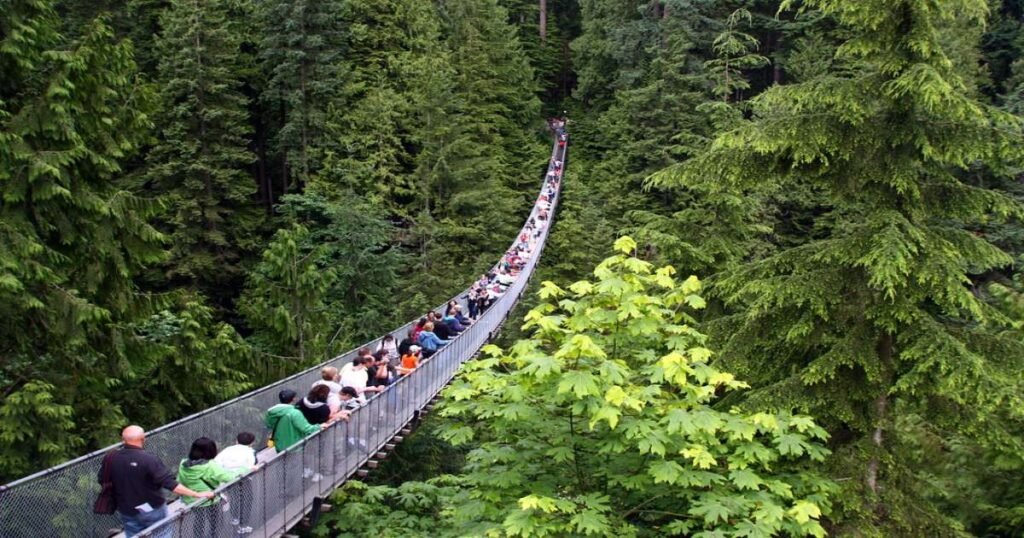
Introduction: Toro Verde Adventure Park in Orocovis is a must-visit for thrill-seekers, featuring one of the longest ziplines in the world and other exciting adventure sports.
Historical and Cultural Significance: This eco-park focuses on sustainable tourism and highlights Puerto Rico’s lush, mountainous terrain.
Unique Features: The “Monster” zipline stretches 2.5 kilometers and offers breathtaking views, while other activities like rope courses provide additional challenges.
Best Time to Visit: Dry season (December to April) for ideal weather.
Travel Tips:
- Transportation: Accessible by car; it’s about a 1.5-hour drive from San Juan.
- Accommodation: Stay in Orocovis or nearby areas.
- Local Customs: Wear comfortable clothing and sturdy shoes, as the park involves physical activity.
12. Arecibo Observatory

Introduction: Known for its iconic telescope, the Arecibo Observatory was once the world’s largest radio telescope and played a key role in astronomy and atmospheric sciences.
Historical and Cultural Significance: Established in 1963, the observatory made significant contributions to space research until its collapse in 2020. It remains a site of scientific history and local pride.
Unique Features: Visitors can explore the visitor center, which offers exhibits on space, planetary science, and radio astronomy.
Best Time to Visit: Open year-round; check ahead for operating hours.
Travel Tips:
- Transportation: Located in Arecibo, reachable by car from San Juan.
- Accommodation: Stay in Arecibo for convenient access.
- Local Customs: Check for tour availability, as site access may be limited.
13. Fajardo Bioluminescent Bay (Laguna Grande)

Introduction: Fajardo’s Laguna Grande is another bioluminescent bay, known for its enchanting glow at night, caused by the presence of bioluminescent microorganisms.
Historical and Cultural Significance: This natural wonder is preserved as an eco-tourism site, giving visitors a close-up experience of Puerto Rico’s unique marine life.
Unique Features: Kayak tours allow visitors to paddle through glowing waters under the starry sky, an unforgettable experience.
Best Time to Visit: New moon nights for maximum bioluminescence.
Travel Tips:
- Transportation: Located in Fajardo, about an hour’s drive from San Juan.
- Accommodation: Stay in Fajardo for easy night tour access.
- Local Customs: Avoid wearing chemicals (sunscreen, insect repellent) to protect the microorganisms.
14. Guajataca Tunnel
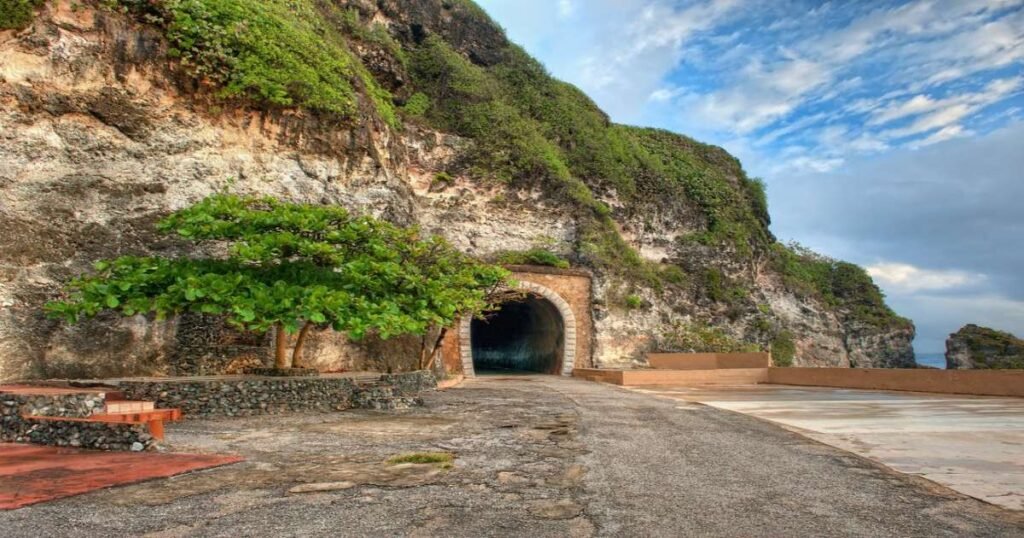
Introduction: Built in the early 1900s, the Guajataca Tunnel served as a railway tunnel connecting the towns of Quebradillas and Isabela. Today, it’s a popular historical attraction.
Historical and Cultural Significance: This tunnel is a reminder of Puerto Rico’s rail history and offers stunning views of the Atlantic coastline.
Unique Features: After walking through the tunnel, visitors are greeted by scenic cliffs and a beach perfect for relaxing and photography.
Best Time to Visit: Late afternoon is good for pleasant weather and sunset views.
Travel Tips:
- Transportation: Located along PR-2; best accessed by car.
- Accommodation: Stay in nearby Isabela or Quebradillas.
- Local Customs: Be cautious near cliffs and wear comfortable shoes for walking.
15. Caguana Indigenous Ceremonial Park

Introduction: Caguana Indigenous Ceremonial Park in Utuado is an archaeological site that provides insight into Puerto Rico’s indigenous Taíno culture.
Historical and Cultural Significance: Dating back to 1200 AD, this ceremonial site is one of the most important Taíno ruins in the Caribbean and includes petroglyphs, ball courts, and artifacts.
Unique Features: Visitors can explore ceremonial ball courts, view ancient carvings, and learn about the Taíno way of life through exhibits.
Best Time to Visit: Year-round; mornings for cooler temperatures.
Travel Tips:
- Transportation: Located in Utuado; a car is recommended.
- Accommodation: Stay in nearby Utuado or Arecibo.
- Local Customs: Respect the site as it’s a sacred place to the indigenous Taíno heritage.
Also Read: Best 15 Tourist Attractions In U.S.
Conclusion
Puerto Rico’s blend of history, culture, and nature creates a truly unique destination, inviting travelers to explore its vibrant charm and Caribbean warmth.
From bioluminescent bays and scenic beaches to centuries-old forts and lush rainforests, the island offers diverse experiences
Whether delving into the island’s colonial past, exploring its natural wonders, or enjoying the vibrant local culture, Puerto Rico offers something for everyone, ensuring an unforgettable travel experience.
FAQs
Q1. When is the best time to visit Puerto Rico for sightseeing and outdoor activities?
A1. December to April is the best time for sightseeing and outdoor activities due to the cooler, drier weather. However, Puerto Rico’s tropical climate makes it a year-round destination.
Q2. What language is primarily spoken in Puerto Rico, and is English widely understood?
A2. Spanish is the primary language, though English is widely understood in tourist areas. Knowing a few Spanish phrases is helpful and appreciated by locals.
Q3. Do U.S. citizens need a passport to enter Puerto Rico?
A3. No, U.S. citizens do not need a passport to enter Puerto Rico, as it is a U.S. territory. International visitors should check entry requirements.
Q4. Are there any travel restrictions or customs to be aware of?
A4. Tipping is customary in restaurants and for services. When visiting natural sites, avoid littering and adhere to local environmental guidelines.
Q5. What currency is used in Puerto Rico, and is it easy to use credit cards?
A5. The U.S. dollar is the official currency. Credit cards are widely accepted, especially in urban and tourist areas, though carrying some cash is advisable for smaller businesses.
Q6. How safe is Puerto Rico for travelers?
A6. Puerto Rico is generally safe for tourists, especially in popular areas. As with any destination, travelers should exercise standard precautions, particularly in isolated areas or late at night.
Q7. Are there any local customs I should be aware of?
A3. Puerto Ricans are warm and hospitable. It’s polite to greet people with a handshake or small talk, and tipping is appreciated in restaurants and for services.
Q8. Is English widely spoken in Puerto Rico?
A4. Yes, English is widely spoken in tourist areas, though Spanish is the primary language. Knowing basic Spanish phrases is helpful and appreciated.
Q9. Can I use U.S. dollars in Puerto Rico?
A5. Yes, the U.S. dollar is the official currency, so there’s no need for currency exchange for U.S. travelers.
Q10. What is unique about Puerto Rican cuisine?
A6. Puerto Rican cuisine is a flavorful blend of African, Spanish, and Taíno influences. Must-try dishes include mofongo, arroz con gandules, and tostones.

